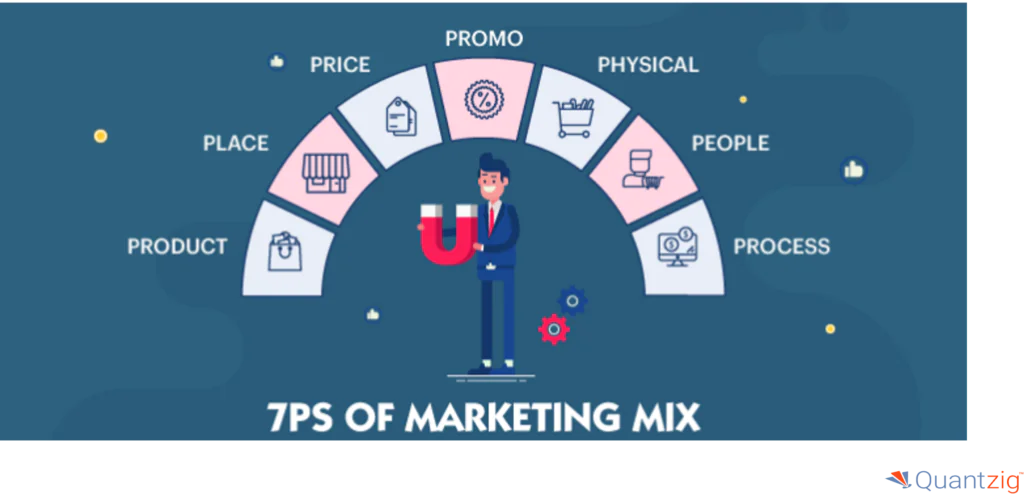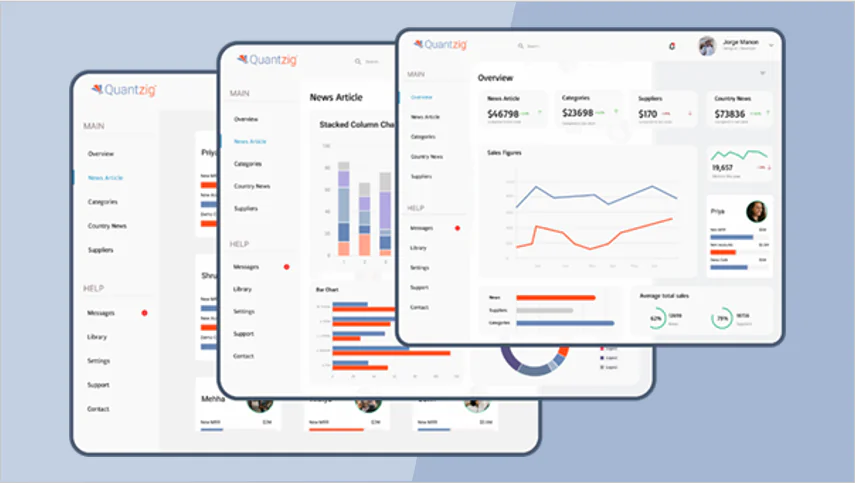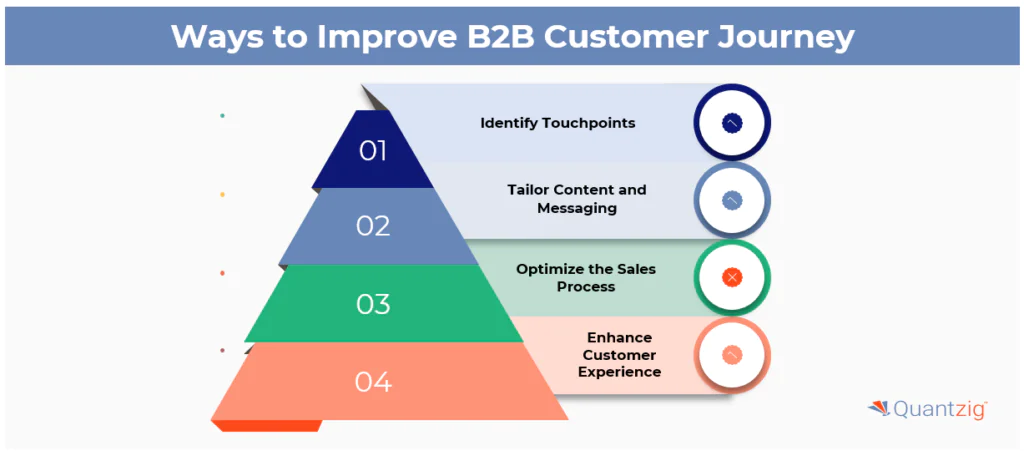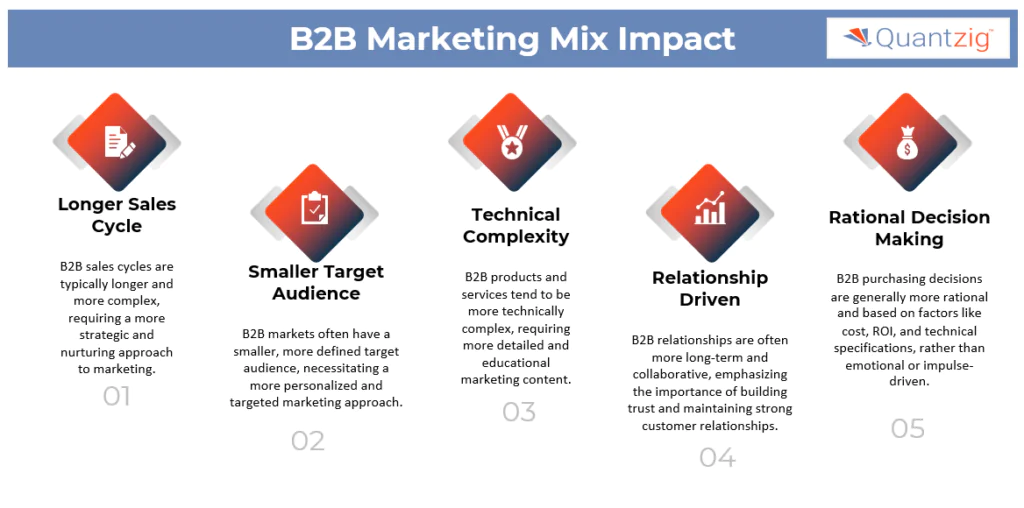A hybrid B2B marketing mix refers to a blend of traditional and digital marketing strategies tailored to meet the unique demands of business-to-business (B2B) markets. It integrates multiple channels and approaches to create a cohesive and flexible strategy that adapts to the evolving preferences of B2B buyers. Here’s an overview of its components and significance:
Table of Contents
Key Features of a Hybrid B2B Marketing Mix
Combination of Digital and Traditional Channels:
- Digital: Includes email marketing, social media, content marketing, SEO, and virtual events.
- Traditional: Incorporates trade shows, in-person meetings, print advertising, and direct mail.
Personalization and Data-Driven Insights:
- Leverages data analytics to understand customer behavior and personalize campaigns across channels.
- Uses tools like CRM systems to track interactions and tailor messaging.
Omnichannel Approach:
Ensures a seamless customer experience by integrating online and offline touchpoints. For example, a hybrid approach might involve starting with a digital ad campaign that leads to an in-person meeting or product demo.
Flexibility in Engagement:
Allows businesses to adapt their strategies based on customer preferences, such as offering both virtual and face-to-face interactions.
Focus on Value Creation:
Emphasizes delivering educational content, thought leadership, and solutions that address specific pain points of B2B clients.
Book a demo to experience the meaningful insights we derive from data through our analytical tools and platform capabilities.
Request a DemoImportance of a Hybrid B2B Marketing Mix
A hybrid B2B marketing mix combines traditional and digital marketing strategies to create a flexible, multi-channel approach that aligns with the evolving preferences of B2B buyers. This approach offers several benefits that can improve marketing effectiveness, customer engagement, and return on investment. Here’s an elaboration on the benefits:
Broader Customer Engagement
A hybrid approach allows businesses to engage customers across multiple channels, including in-person interactions, virtual meetings, email campaigns, and social media. This omnichannel strategy ensures that businesses can meet customers where they are most comfortable, whether online or offline.
Improved Personalization
By integrating data from both traditional and digital touchpoints, hybrid marketing enables businesses to deliver highly personalized experiences. This includes tailored content, customized product offerings, and communication based on customer preferences and behaviors.
Increased Revenue Potential
Hybrid strategies have been shown to drive up to 50% more revenue by combining the strengths of digital scalability with the depth of traditional relationship-building. For example, remote selling can complement in-person interactions for complex sales scenarios.
Enhanced Flexibility
A hybrid model provides the agility to adapt quickly to changing market conditions or customer demands. For instance, businesses can pivot between online and offline strategies depending on factors like pandemic restrictions or customer preferences for remote engagement.
Cost Efficiency
Digital channels often reduce costs associated with traditional methods like in-person meetings or print advertising. Combining these cost-effective digital tools with selective use of traditional methods ensures an optimized budget allocation.
Scalability
Hybrid marketing allows businesses to scale their efforts efficiently by leveraging digital platforms for broader reach while using traditional methods for high-value accounts or key decision-makers.
Strengthened Customer Relationships
By offering multiple channels for interaction, businesses can build stronger relationships with clients by providing convenience and addressing their specific needs at various stages of the purchasing journey.
Competitive Advantage
Adopting a hybrid approach helps businesses stay ahead of competitors by catering to modern buyer expectations for seamless omnichannel experiences. It also demonstrates adaptability and innovation in a rapidly changing market environment.
Incorporating the B2B customer journey into your marketing mix can significantly enhance your marketing efforts. By understanding the various stages of the customer journey, B2B marketers can:
- Identify touchpoints: Mapping the customer journey helps identify the key touchpoints where your target audience interacts with your brand, products, or services. This information can inform the placement and optimization of your marketing activities.
- Tailor content and messaging: Aligning your marketing content and messaging with the specific needs and concerns of your customers at each stage of the journey can improve engagement and conversion rates.
- Optimize the sales process: Understanding the customer journey can help streamline the sales process, ensuring a seamless and efficient experience for your B2B clients.
- Enhance customer experience: By considering the customer journey, B2B marketers can identify and address pain points, improve overall customer satisfaction, and foster stronger, more loyal relationships.
The 4Ps Vs the 7Ps in the B2B Marketing Mix

The 4Ps
The traditional 4Ps of the B2B marketing mix are:
- Product: The goods or services offered by the business, including their features, benefits, and unique value propositions.
- Price: The cost of the product or service, including any discounts, payment terms, or pricing strategies.
- Place: The distribution channels and logistics used to make the product or service available to the target customers.
- Promotion: The various marketing communication methods used to raise awareness, generate interest, and drive sales.
The 7Ps
The expanded 7Ps of the B2B marketing mix include the traditional 4Ps, plus:
- People: The employees, sales representatives, and other personnel who interact with and serve the B2B customers.
- Process: The systems, procedures, and workflows involved in delivering the product or service to the customer.
- Physical Evidence: The tangible elements, such as the business premises, equipment, or packaging, that contribute to the customer’s perception and experience.
The 7Ps framework provides a more comprehensive approach to B2B marketing strategy, allowing businesses to address a wider range of factors that influence the customer’s decision-making process and overall satisfaction.
Experience the advantages firsthand by testing a customized complimentary pilot designed to address your specific requirements. Pilot studies are non-committal in nature.
Request a PilotThe Small Ways the B2B Marketing Mix Differs Make a Big Difference
While the core elements of the marketing mix are similar for both B2B and B2C (business-to-consumer) markets, there are some key differences in the B2B context that can have a significant impact on marketing effectiveness or the increasing ROI:
By understanding and addressing these nuances in the B2B marketing mix, businesses can develop more effective and impactful marketing strategies that resonate with their target audience and drive sustainable growth.
Steps to Implement a Hybrid B2B Marketing Mix
Understand Customer Preferences
Today’s B2B customers demand a mix of in-person interactions, remote communications (via phone or video), and e-commerce self-service throughout their purchasing journey. To meet these expectations, businesses must gather insights into customer preferences and adapt their strategies accordingly. For example, prioritize in-person interactions for high-value accounts while leveraging digital channels for broader engagement.
Select the Right Channels
Focus on 1-3 primary marketing channels that align with your target audience and campaign objectives. Pair tried-and-tested channels like email or LinkedIn with experimental ones, such as TikTok or emerging platforms, to maximize reach while maintaining relevance. Analyze competitors’ strategies and identify underutilized channels to stand out in the market.
Adopt an Omnichannel Approach
Hybrid marketing thrives on omnichannel execution, where multiple touchpoints are integrated to create a seamless customer journey. Use a combination of remote selling, e-commerce platforms, and traditional methods to engage customers at every stage of their decision-making process. Ensure consistency in messaging across all channels to reinforce brand identity.
Leverage Data and Insights
Data-driven decision-making is critical in hybrid marketing. Use CRM systems and analytics tools to track customer interactions across digital and offline channels. Automate data collection from emails, calls, and online engagements to generate actionable insights. These insights can help prioritize leads, refine targeting efforts, and optimize content strategies.
Balance Digital and In-Person Engagement
While digital tools enable scalability and convenience, certain situations—such as complex negotiations or onboarding new clients—still require face-to-face interactions. Reserve in-person meetings for critical moments that matter most to customers, such as major purchasing decisions or building trust with new clients.
Create Flexible Campaigns
Hybrid campaigns should be agile enough to adapt to changing market dynamics or customer needs. Regularly update account priorities, reallocate resources dynamically, and adjust strategies based on real-time feedback from customers or performance metrics.
Align Sales and Marketing Teams
Collaboration between sales and marketing teams is essential for hybrid success. Establish shared goals, integrate tools (e.g., CRM), and maintain consistent communication to ensure both teams work together seamlessly. This alignment ensures that leads generated through marketing efforts are effectively nurtured by sales teams.
Measure ROI Across Channels
Track the performance of hybrid campaigns by linking offline activities (e.g., trade shows) with online metrics (e.g., website traffic). Use advanced analytics to measure ROI across all touchpoints, ensuring that resources are allocated effectively to high-performing channels.
Personalize Content and Messaging
Tailor your content strategy to address the specific needs of different customer segments. Use insights from data analytics to create personalized messaging that resonates with each audience group. This can include customized emails, targeted ads, or industry-specific case studies.
Experiment and Optimize
Test new tactics while adhering to best practices for established methods. Experimentation allows businesses to identify what works best for their unique audience while staying ahead of competitors. Continuously refine campaigns based on performance data and customer feedback.
Get started with your complimentary trial today and delve into our platform without any obligations. Explore our wide range of customized, consumption driven analytical solutions services built across the analytical maturity levels.
Start your Trial TodayHow Quantzig Helps with Hybrid B2B Marketing Mix Modeling?
Quantzig empowers businesses to optimize their marketing strategies through advanced Marketing Mix Modeling (MMM) solutions. Our approach focuses on delivering insights that enhance Marketing Return on Investment (MROI) by identifying the most impactful marketing tactics. Here’s how Quantzig supports organizations through the entire MMM process:
- Data Collection & Integration: We gather and integrate data from multiple sources to ensure a robust foundation for analysis. This helps in understanding key variables like products, markets, and customer demographics.
- Data Modeling: Our advanced statistical models address business-specific challenges, offering insights tailored to different market segments and timelines.
- Model-Based Measures: Quantzig’s MMM solutions break down sales contributions by marketing tactics, helping businesses distinguish between core and incremental efforts for precise decision-making.
- Simulation & Optimization: Through data simulations, we provide actionable inputs, helping companies refine their marketing strategies for future success.
Quantzig’s MMM services help brands maximize marketing efficiency and make informed decisions for sustainable growth.






